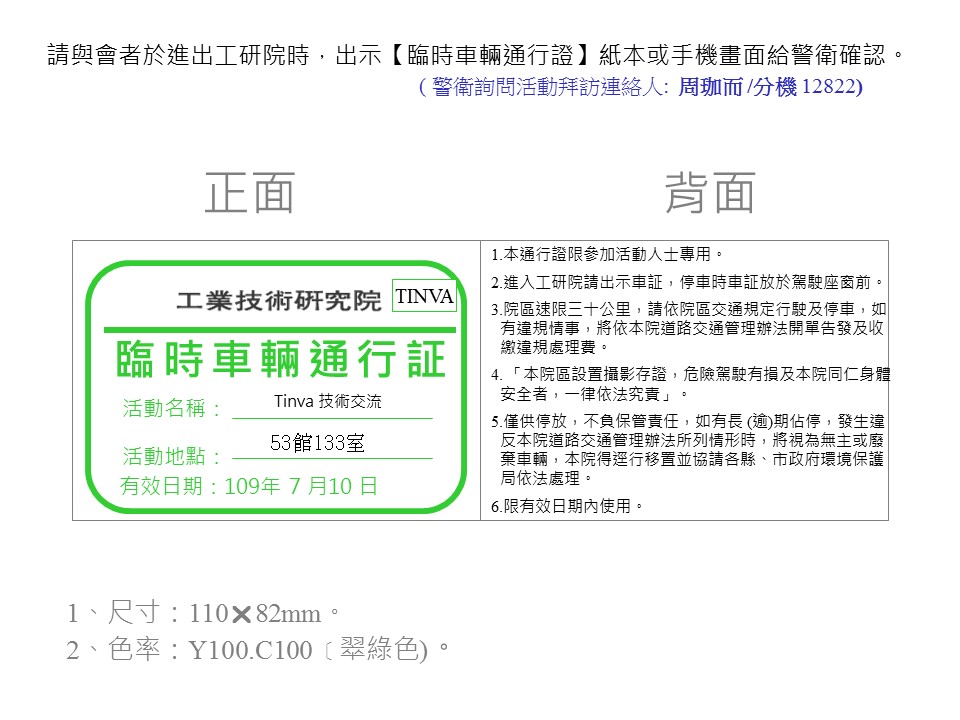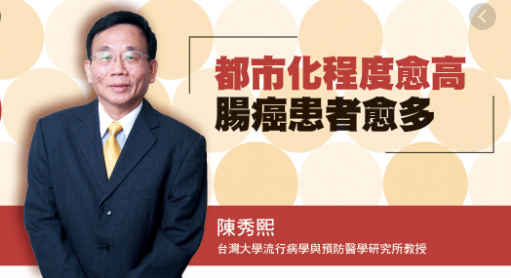21次!!!
從 2020/2/10 起每周一, 台大公衛學院不間斷地站在最前端!
以科學防疫的角度提出有知識深度、有科學根據的防疫看法和意見,本著學術防疫的初心與相隔僅只兩個街區的衛生福利部疾病管制署(CDC)之政策防疫導向相互互補,在人心惶惶的疫情期間給予社會各界相關指引與建議,讓國家的防疫做得更好也把臺灣的防疫成果分享至世界。
這就是 台 大 公 衛 學 院!!!!
無須奔波到台北~
TINVA為您 重磅隆重 邀請 台大公衛學院 陳秀熙 副院長 到新竹協會!
為我們進行精彩講座!
這麼好的機會, 您只要留下時間即可共襄盛舉!!!
Date: 2020.7.10 (Fri), 2-4pm
Venue: 協會會址 (工研院中興院區53館133室)
TINVA官網報名連結: https://tinva.org/calendar/detail/92
醫療大數據
「大數據」近年已逐漸成為資訊領域的顯學,相關報導在報章雜誌上也屢見不鮮,不論是要優化商品陳列方式,或是讓廣告投放更精確,大數據的分析與應用都在每個產業的運作都有可用武之地。那麼,對於重視精確、嚴謹與知識的健康醫療產業而言,大數據的運用究竟能帶來什麼改變呢?
大數據點燃醫療創新的火種
事實上,由於長時間累積下來的資料,醫療正是受益於數據技術的代表產業之一。舉例來說,「精準醫療(Precision Medicine)」便是近年產業界熱門的發展方向之一:除了透過病患描述自身症狀的傳統方法,再加上生物醫學檢測,並將家族病史、種族等個人資料透過人體基因資料庫進行比對分析,從中選出最適合病患的治療方式,同時也能精簡醫事成本。因此,舉凡科技大廠如 Google、IBM以及鴻海都有投入精準醫療的領域;歐巴馬在2015年也投資2.15億美元發展「精準醫學計畫(The Precision MedicineInitiative)」,期待當基因檢測與大數據結合,能在預防、個人醫學以及健康照護等領域有所突破。
此外,大數據的技術也預期能有效幫助醫事人員減少資料蒐集的成本,發現病人就醫程序中不滿意的細節,以及整理資料成為國家研擬公共政策的依據等等。其實,醫療大數據近年也開始應用於不同的領域,舉凡金融科技、人工智慧(Artificial Intelligence)以及城市規劃都在其中。綜觀以上,醫療大數據的發展似乎正以星火燎原之勢,顛覆一整個醫療產業的運作模式,改變人們對未來醫學的想像。
數據之難-完整性、隱私權、人才缺
然而,想廣泛運用醫療大數據,或是藉此有效預防疾病,產業界仍有許多困難需要克服。
「大數據的困難在於其完整性。」中國微醫集團副總裁何超表示,因為資訊蒐集的來源與方式很多元,所以這些資料的質量控管都是項挑戰。以中國深圳市為例,2016年的全市的居民健康檔案共有一千五百萬份,但整個深圳市設籍的居民只有三百多萬人;當地官員表示這些檔案,有部分就是「死檔」,沒辦法作為統計和分析的依據。而當來自不同機構、地區或是蒐集方法的資訊集中在一起,整合複雜的資訊也是項重要的工作;以二十年前的臺灣為例,政府花了一億元的成本(相當於今日兩億)來整理全民健康保險的統計數據。除此之外,醫學是公認相當重視精確的產業之一,當蒐集方式稍有不慎,讓分析結果出現些許的偏差,後果相當嚴重。
其次,隱私權、資訊外流等資安議題也是發展醫療大數據應用時的挑戰。以精準醫學為例,其中涉及的訊息包括臨床及保險理賠、人口統計、基因等數據;也可能會有姓名、生日、戶籍地址與聯絡方式等私人資料。因此,人們也會擔心這些醫療數據會被不當的利用。根據金融時報(Financial Times)的報導,當Google全資擁有的DeepMind人工智慧公司,取得英國倫敦三家醫院、超過兩百萬市民的病例時,便引起國內兩個監理機關的主動調查,以確保DeepMind在取得技術進展的同時,能否不迴避正當程序和保衛個人權利。
最後,哈佛商業評論(Harvard Business Review)的專欄指出,醫療大數據的應用有了天時地利,但人的因素仍待解決。業界對於能發展大數據的人才仍是需才孔亟。因為數據的整理、歸檔,一般資料專業的人即可完成,但真正能從龐大的數據中看出細節的天才(Talent)少之又少。上海大數據聯盟祕書長時煒則解釋:「原來做生物醫藥領域的很多人都是業內專家,但數據處理、加工的過程當中涉及到數學家、程式設計師。怎麼用演算法對數據進行加工、按各種規則歸類,這很重要,這一塊需要產業的人、做基礎科研的人、做程式開發的人、營運的人融合。」
點亮混沌中的明燈-即時大數據病歷分析
儘管數據應用仍有種種困難,依然有團隊在黑暗中摸著石頭過河,造就了許多創新的應用。
美國賓州的Geisinger Health System便是其中一例,他們採用一套名為Unified Data Architecture (UDA)的資訊系統來整合既有的資訊與醫療管理流程;哈佛商業評論就指出UDA是世界最大的Point-of-Care的應用系統,幫助醫事人員追蹤病患的病歷,並比對龐大的基因庫了解潛在可能發生的疾病,使醫生能在診斷時為病人做是最適當的治療。舉例來說,Geisinger利用UDA發展「Close the Loop」計畫,便挽救了許多性命。
Close the Loop計畫是在病人手術之前,提供醫事人員完整的資訊,幫助他們決定應先處理哪部分的創傷,或是在開刀時該注意的事情。以車禍造成命危的傷患為例,當病人被送到醫院時,醫事人員會先幫他做放射掃描,了解身體內部是否也有受創,再依嚴重與緊急程度決定要先治療身體的哪一部分。此時,醫院的臨床資料與診斷報告便會匯入UDA,UDA能以每秒兩百萬份資料的速度,掃描比對不同來源的資料庫,找出病人可能潛在的病史,幫助醫生做出最後的決定。像是UDA就曾多次找出某些病人患有副主動脈瘤(Abdominal Aortic Aneurysms),之前卻沒有被發現或持續追蹤;而這個資訊也讓醫生能在手術之前做好準備,在適當的時機處理,挽回生命。
醫療大數據由於能被廣泛運用,而成為當前熱門的議題;它也的確存在帶被克服的困難,使這波改變浪潮的速度減緩。然而在這片渾沌之中,兼具技術與細心的Geisinger Health System或許可作為參考的案例之一。
活動聯繫窗口:
T: 0911-216119 (Lillian) | E: lillian@tinva.org
T: 03-5912128 (Tammy) | E: tammy@tinva.org
(以下為陳副院長相關訊息分享!!!)
https://report.nat.gov.tw/ReportFront/PageSystem/reportFileDownload/C10700930/001
台大公共衛生學院副院長陳秀熙教授:
根據 WHO 對於慢性病防治之建議,主要包括六大面項:健康 服務之傳送、資訊系統建置、醫療產品、疫苗及科技之開發、健康 經濟及領導角色及管理等,透過上述這些元素以降低 25%因慢性病 所導致的早死亡(premature mortality)影響。我國衛生福利部國民健康 署於國家癌症篩檢之執行徹底結合這六大面項而成功完成初步相當 不錯的結果,因此邀請陳秀熙教授進行該部分演講,並探討如何利 用該基礎推動台灣慢性病防治之藍圖及其執行模式。
我國於 1995 年開辦全民健康保險,其中預防保健政策提供 40 歲以上之族群成人及老人健康檢查服務,結合癌症及慢性病篩檢共 同平台,也因此了解癌症與慢性病之間存在共同危險因子,例如肥 胖、抽菸、嚼檳榔等,台灣諸多縣市因此推動整合式篩檢平台,深 入社區提供健康篩檢服務,因而建立我國完整慢性病及健康行為之 重要大型資料庫,進一步利用大數據模式探討我國族群高、中、低 危險分群後,將此方式應用於社區,針對不一樣危險分群給予公共 衛生多階段不同的介入模式,包括初段衛生教育介入、次段不同篩 檢間隔或工具之應用,以提高對於族群式健康照護之效率,因此以 15 台灣目前發展之模式提供給其他國家作為參考。
Universidad Politécnica de Madrid 大學 Maria Teresa Arredondo 教授: 最後邀請 Prof. Maria Teresa Arredondo 教授分享目前科技環境輔 助慢性病健康管理之實際應用狀況,Prof. Maria Teresa Arredondo 主 要是資訊及通訊類背景出身,長期投注於健康照護結合通訊科技類 之應用,因此在西班牙 LifeSTech 研究室建立實體物聯網架構並形成 一個實體參訪中心,該中心結合學校學術單位、城市設施、通訊及 交通、居家環境、大數據中心等為一體,展現物聯網健康照護架構 及執行方式。Prof. Maria Teresa Arredondo 其研究領域包含個人化健 康照護、健康活躍老化、健康照護設施研究、打造智慧城市及健康 物聯網,以創造未來更加健康、活躍的生活。 在此次演講過程中,教授呈現科技化應用於巴金森氏症病患之 照顧,包括家庭、社區環境及其日常生活起居、生理功能監測等等 如何與通訊及資訊應用連結。除此之外,她也提供職能復健輔具之 應用、透過穿戴式之生理及行為表現預測心理及情緒欲呈現之研 究、穿戴式及臥躺床被對於生理監測之應用、老人失智症之輔具介 入延緩心智功能等,皆呈現現代科技之廣泛應用而不再僅是夢想境 界,是一個相當值得參訪的單位。
4. 台大陳秀熙教授
講題:
Status and Progress on Non-communicable Disease (NCD): Taiwan’s Perspective
摘要:
Multi-level prevention of NCD Prevention of non-communicable disease (NCD) is often involved with multi-dimensional aspects (including multifarious etiologies, multi-state process, and multiple outcomes, multi-level organization (from individual, family, institution, community, and environment)). How to integrate different and multi-level preventive strategies as a unifying and systematic framework pursuant to the principle of surveillance and population-based prevention cannot be overemphasized if the goal of WHO, “25% mortality reduction form NCD by the end 2025” is to be achieved. Over the past two decades, Taiwan health authority, particularly Health Promotion Administration, one of sections under Ministry of Health and Welfare, together with health professionals, and non-profit organization has been devoted to developing this goal through different strategies at different levels after a series of systematic epidemiological surveys and studies for need assessment between 1970 and 1990. At nationwide level, health policies on primary prevention (such as 20 smoking cessation and weight reduction), secondary prevention (such as screening for cancers of cervix, breast, colon & rectum, and oral cavity cervical), and tertiary prevention (universal insurance health care) of NCD have been advocated and carried out under various Acts mandated since early 1990s. At institution level, the vertical integration of health care delivery in relation to NCD has been made by systematically streamlining primary care that is responsible for adult check-up and basic preventive services into medical centre with main emphasis on tertiary prevention of offering medical care for patients such as targeted therapy for cancer and health care for chronic disease (such as diabetes care). Such inreach health preventive services have been delivered to each resident and have also been covered by national health insurance since 1995. At community level, community-based integrated screening and intervention programs on the basis of family unit, albeit invitation is still done by individual level, have been conducted since 1999 to deliver a series of outreaching health preventive services (including five common cancers and three chronic diseases) to offset the corresponding in-reach preventive services indicated above in order to reach the principle of equity, efficiency, and participation. Integrated preventive service for NCD Since we have multi-level prevention programs for NCD, assessing the benefit of such integrated preventive services is worthy of being investigated. Here, we first show an example of how community-based integrated screening and intervention program in relation NCD produce the overall benefit of offering such an integrated preventive services embracing primary, secondary, and tertiary prevention. We then propose one example of integrated preventive services for 21 preventing colorectal cancer, cardiovascular and cerebrovascular disease. Economic evaluation of the prevention of gastric cancer by using chemoprevention, screening, and tertiary prevention is also presented here. Hierarchical Informatics on NCD prevention Multi-level dimensions in the prevention of NCD as indicated above offer an opportunity to develop a systematic and integrated information system from medical informatics for health professionals to cyberinformatics for clients by building up big data system on primary data and secondary data. The former consists of population-based data accrued from community-based integrated screening and health promotion on demographics, risk factors and social behavior determinants related to NCD and patients-centred data on health care delivery accrued from national health insurance. The latter consists of population-registry-based data such as mass screening registry, cancer registry, and mortality registry. Personalized public health services for prevention of NCD Based on big data information system, personalized risk assessment models were developed according to various diseases to elucidate the roles of effects of one detrimental or protective factor on multiple outcomes and state-specific roles of multifarious factors (including genetic determinants, environmental factors, and psychosocial behavior factors on multi-state outcomes, leading to recurrence and death. Such a systematic and multi-state risk assessment model for each disease can be integrated as a whole to develop a personalized public health integrated service for prevention of a series of NCD rather than only for one single NCD embracing primary, secondary, 22 and tertiary prevention. We show how such a personalized risk assessment model is applied to develop personalized screening policy for breast cancer screening and also preventive services for other chronic diseases. Challenges for prevention of NCD There are several challenges for prevention of NCD in in Taiwan and also in the globe. Benefits and harms of preventive services for NCD have been often debatable. For example, overdiagnosis of mammography and unnecessary treatment for pre-diabetes who may have been self-resolved had screening not been offered to them are two classical examples. Solutions to such challenges may rely on the development of personalized public health services, the better use of information through m-health, and the development of shared decision making for individual’s activation and empowerment.


